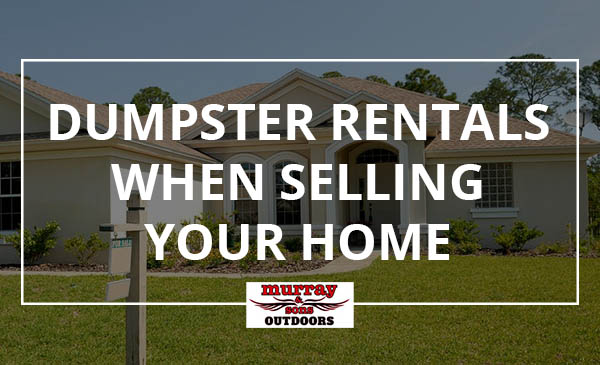- Get a FREE Estimate!
- 636-698-4787
Common Mistakes to Avoid When Renting a Dumpster

Fall Lawn Maintenance Tips
September 22, 2023
Dumpster Rentals vs. Junk Removal Services: Which is Right for You?
October 19, 2023Avoid These Common Dumpster Mistakes
Choosing the Wrong Size Dumpster
One of the most common mistakes when renting a dumpster is choosing the wrong size. It’s crucial to take the time to accurately estimate the amount of waste and debris you’ll need to dispose of. Underestimating how much space you’ll need often leads renters to realize mid-project that their dumpster is overflowing. This may require getting a second dumpster delivered, which adds delays and extra rental fees. On the flip side, overestimating dumpster size leads to paying more than necessary. The ideal is ordering a dumpster that comfortably fits your waste without lots of empty unused space.
To choose the right dumpster size:
- – Take an inventory of everything you plan to throw out. For remodeling projects, compile a list of old materials such as drywall, flooring, countertops, cabinets, etc. This gives you a sense of volume.
- – Account for unexpected waste. Remodeling projects often involve surprises like rotting walls behind tile, insulation around old wiring, etc. Budget an extra 20% more space.
- – Consider that remodeling debris takes up more space than regular trash. Bulky items like cabinets and flooring use space inefficiently compared to compacted trash.
- – Allow extra capacity if you’ll be renting the dumpster for an extended period. It’s better to have too much than too little space.
With a carefully calculated estimate of waste, you can select the ideal dumpster size for your rental. This will save you money, hassle, and the headache of an overflowing dumpster.
Not Preparing the Dumpster Site
Renting a dumpster requires some preparation of the site where the dumpster will be placed. Failing to properly prepare the site is a common mistake that can lead to delivery issues, limited access to the dumpster, and potential injuries.
Before the dumpster is delivered, you’ll want to clear out the space where you plan to have it installed. Remove any debris, garbage, branches or other items that would get in the way. The area should be completely open and accessible. This allows the delivery driver easy access to place the dumpster exactly where you want it.
It’s also important to check for overhead obstacles like tree branches or power lines. The dumpster may need to be craned into place, so any low-hanging items could get in the way. Trim back tree limbs and visualize the path the truck will take through your property.
Failure to properly prepare the site can mean the delivery driver won’t have sufficient space to place the dumpster. This could result in having to place it in a suboptimal location, making it harder for you to access. In severe cases, lack of preparation may even prevent delivery entirely until you clear the space.
By taking the time to prepare the dumpster location, you can ensure a smooth delivery and easy accessibility for loading debris during your rental period. This small effort upfront will pay off every time you need to toss in waste or recycling during your project.
Overfilling the Dumpster
Overfilling your dumpster can lead to significant problems and extra costs. Dumpsters have set weight limits and restrictions on how full they can be. Going over these restrictions can result in fees, penalties, or even having the dumpster rejected for pickup.
Most dumpster rental companies will outline weight and fullness limits in the rental contract. It’s important to understand these restrictions beforehand. Exceeding the weight limit risks damage to the dumpster or the garbage truck that collects it. Overfilling with debris can also make it impossible to securely move the dumpster.
If your dumpster is overloaded, the rental company may charge extra fees. These can include overage fees based on additional weight or fullness. In extreme cases, the company may reject pickup altogether until excess materials are removed. You would then need to pay extra rental fees while waiting to get the dumpster emptied.
To avoid overfill issues, carefully estimate how much debris you will generate. Allow plenty of extra room in the dumpster, especially if your waste volume is unclear. As the dumpster fills up, periodically check that you are staying within the stated limits. If it looks like you may exceed the restrictions, order a larger dumpster or an additional rental period right away. Monitoring fullness and weight as you go will help you avoid costly penalties down the road.
Choose Murray and Sons today to get a professional dumpster delivered right to your door!




